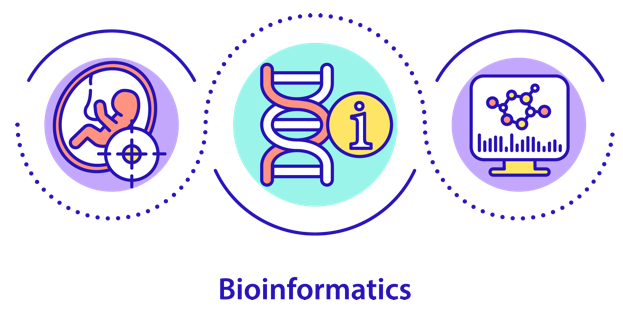The Best Strategy To Use For Bioinformatics Tutor
Table of ContentsNot known Details About Bioinformatics Tutor See This Report on Bioinformatics TutorThe Bioinformatics Tutor DiariesWhat Does Bioinformatics Tutor Mean?5 Easy Facts About Bioinformatics Tutor Shown
Of the total participants associated with the training, 80% were pupils from public greater education and learning institutions, while the remaining 20% originated from exclusive establishments. To qualify for a certificate of engagement, pupils were needed to attend at the very least 90% of the total training hours. As an outcome of this need, a remarkable 95% of the individuals efficiently acquired their certificates, having not only fulfilled the minimum participation requirements but additionally finished all designated activities throughout the training.
During the elevation of the COVID-19 pandemic, specifically in between June and August 2020, the job team was entrusted with organizing specialized training in bioinformatics. This training was especially focused on pupils from the research study group Center for Study in Applied Computing at the Federal College of Pará (UFRA) The adjustment to remote learning systems as a result of the pandemic produced an opportunity to explore new training approaches and electronic tools that enhanced both reach and efficiency.
This program was made to give an accessible yet comprehensive summary of Artificial Knowledge strategies, specifically as used in bioinformatics (Bioinformatics Tutor). This virtual layout allowed participation from trainees across Brazil, several of whom may not have had the opportunity to attend in-person sessions.
Fascination About Bioinformatics Tutor
About 50% of the total training hours were devoted to functional tasks where pupils built intelligent designs and applications in a variety of clinical domain names, consisting of genetics, molecular biology, and environmental data analysis. These platforms enabled pupils to engage in real-time information manipulation, model training, and formula testing.
The training course brought in 80 individuals in total amount. Sixty of them were connected with different greater education and learning institutions in the state of Pará, while the remaining twenty came from organizations found in five other Brazilian states. This broad geographical depiction highlighted the national interest in bioinformatics and the growing demand for specialized skills in this field. By introducing Artificial Intelligence in a relevant and sensible context, the campaign offered to link the space between theory and real-world application, giving pupils with a strong structure for future research or employment in the area.
The training campaign formed component of a wider scholastic outreach initiative referred to as the Bioinformatics on the Roadway project. This job has, for many years, introduced loads of students to the globe of bioinformatics and computational biology. The events held under this umbrella campaign have taken area across numerous regions and years, as summed up in Table 1 (List of events, areas, years, and total numbers of students and trainers)
Numerous of these teams, initially brought together by their involvement in training occasions, have actually considering that gone on to generate independent scientific research in collaboration with local academic organizations. The training not only promoted scientific thinking within the context of bioinformatics but also triggered joint partnerships that expanded past the training setting.
Excitement About Bioinformatics Tutor
The job itself was conceived and organized by useful link MB and RR, who supervised the preparation and execution of each step. Lectures were provided by a multidisciplinary team containing megabytes, FA, EF, KP, JS, DM, SN, LP, LG, IH, rr, and a/c. The same team, excluding IH and RR, also served as tutors for the functional training components. Funding for the project was offered through the give 88887.200562/ 2018-00 from CAPES. The authors expand their thankfulness to everybody that added to the awareness of this task, whether straight or indirectly, because its inception.
The Federal University of Pará's Workplace of Research study (PROPESP/UFPA) additionally offered economic support, especially for the production of the last manuscript. The authors state no business or financial problems of interest that might have affected the research study. All analyses and point of views shared in this article are entirely those of the writers and do not necessarily reflect those of their particular organizations, the author, editors, or customers involved in the publication process.

An Unbiased View of Bioinformatics Tutor
From a pedagogical point of view, the teaching technique made use of in the training was purposefully interactive. over here Classes were performed in a way that encouraged student engagement and discussion, surpassing memorizing memorization to explore exactly how concepts are developed, applied in life, and examined in academic setups. The educational philosophy concentrated on nurturing look at this now both solid and battling trainees, supplying personalized support, and structure confidence with sustained mentorship and patience.

Each group, being composed of approximately 36 participants, was supported by 3 coaches-- a lot of whom were postdoctoral scientists with specialized experience. These advisors not only assisted make the team tasks but also facilitated their execution, ensuring that each research study concern was both properly tough and appropriate. The objective was to offer a biologically practical context that participants could check out with flexible objectives and accessibility to curated datasets.
For extra understandings into the technique and end results of this project-based knowing strategy, readers are directed to S1 Text, that includes detailed descriptions of the instructional structure, examination strategies, and project themes utilized in the training sessions.
Bioinformatics Tutor Can Be Fun For Anyone
Of the total amount individuals entailed in the training, 80% were pupils from public higher education and learning establishments, while the continuing to be 20% came from personal establishments. To qualify for a certificate of involvement, trainees were called for to participate in at least 90% of the complete training hours. Notably, beyond the students who enlisted in the training sessions, seven experienced instructors got involved in supplying the programs, while 3 devoted study teachers collaborated the total training process. About 50% of the total training hours were devoted to practical activities where students constructed smart models and applications in an array of clinical domain names, including genes, molecular biology, and environmental information evaluation. The training not only fostered clinical reasoning within the context of bioinformatics however likewise triggered joint partnerships that extended beyond the training environment.